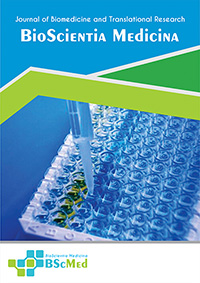Main Article Content
Abstract
Background: Thyroid eye disease (TED) is an autoimmune orbitopathy where inflammation drives significant oxidative stress, contributing to patient morbidity. Malondialdehyde (MDA), a lipid peroxidation product, is a key biomarker of this oxidative damage. While vitamin D has known systemic immunomodulatory effects, its capacity to mitigate local oxidative stress on the ocular surface in TED is poorly understood. This study aimed to investigate the association between oral vitamin D supplementation and tear film MDA levels in patients with mild TED.
Methods: A prospective, single-center, quasi-experimental pre-post study without a control group was conducted on 15 patients diagnosed with mild, active TED (Clinical Activity Score ≤3). Participants received 1000 IU of oral cholecalciferol (Vitamin D3) daily for 21 consecutive days. The primary outcome was the change in tear film MDA concentration, measured by ELISA. Secondary outcomes included serum 25-hydroxyvitamin D [25(OH)D] levels and clinical ocular surface parameters (Ocular Surface Disease Index [OSDI], Tear Break-Up Time [TBUT], Schirmer's I test).
Results: A statistically significant reduction in mean tear film MDA levels was observed, decreasing from a baseline of 8.69 ± 4.15 ng/L to 5.70 ± 1.56 ng/L post-intervention (p<0.001). This was accompanied by a significant increase in mean serum 25(OH)D levels from 18.2 ± 5.9 ng/mL to 29.8 ± 6.4 ng/mL (p<0.001). Significant improvements were also noted in OSDI scores (p=0.002) and TBUT (p=0.005). The reduction in tear film MDA showed a significant negative correlation with the increase in serum 25(OH)D (r = -0.68, p=0.005).
Conclusion: In this preliminary, uncontrolled study, short-term oral vitamin D supplementation was associated with a significant attenuation of ocular surface oxidative stress in patients with mild TED. These findings provide initial biochemical evidence for the potential localized benefits of vitamin D and support the need for larger, placebo-controlled randomized trials to validate its role as a safe adjunctive therapy for managing the ocular surface component of this disease.
Keywords
Article Details
As our aim is to disseminate original research article, hence the publishing right is a necessary one. The publishing right is needed in order to reach the agreement between the author and publisher. As the journal is fully open access, the authors will sign an exclusive license agreement.
The authors have the right to:
- Share their article in the same ways permitted to third parties under the relevant user license.
- Retain copyright, patent, trademark and other intellectual property rights including research data.
- Proper attribution and credit for the published work.
For the open access article, the publisher is granted to the following right.
- The non-exclusive right to publish the article and grant right to others.
- For the published article, the publisher applied for the Creative Commons Attribution-NonCommercial-ShareAlike 4.0 International License.





